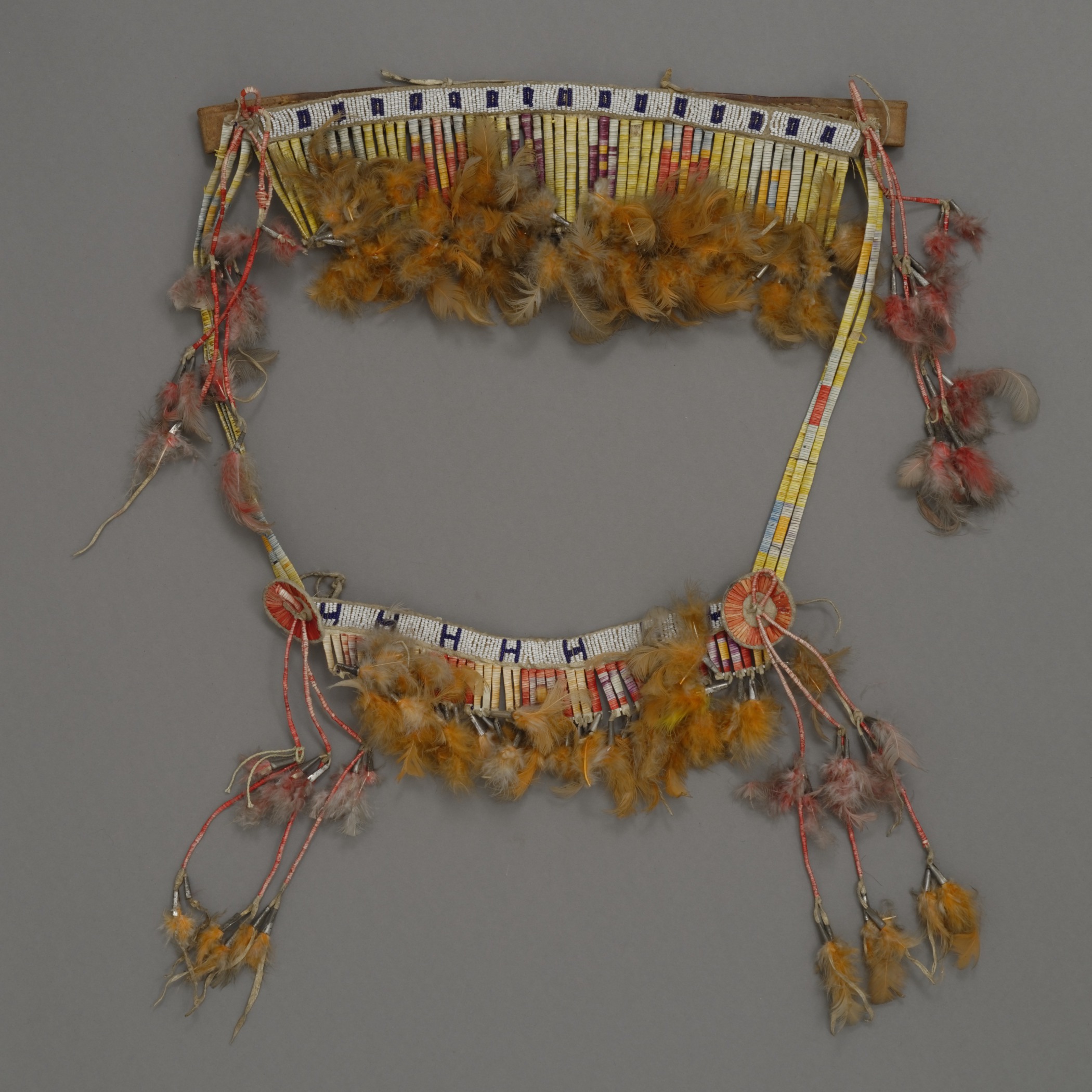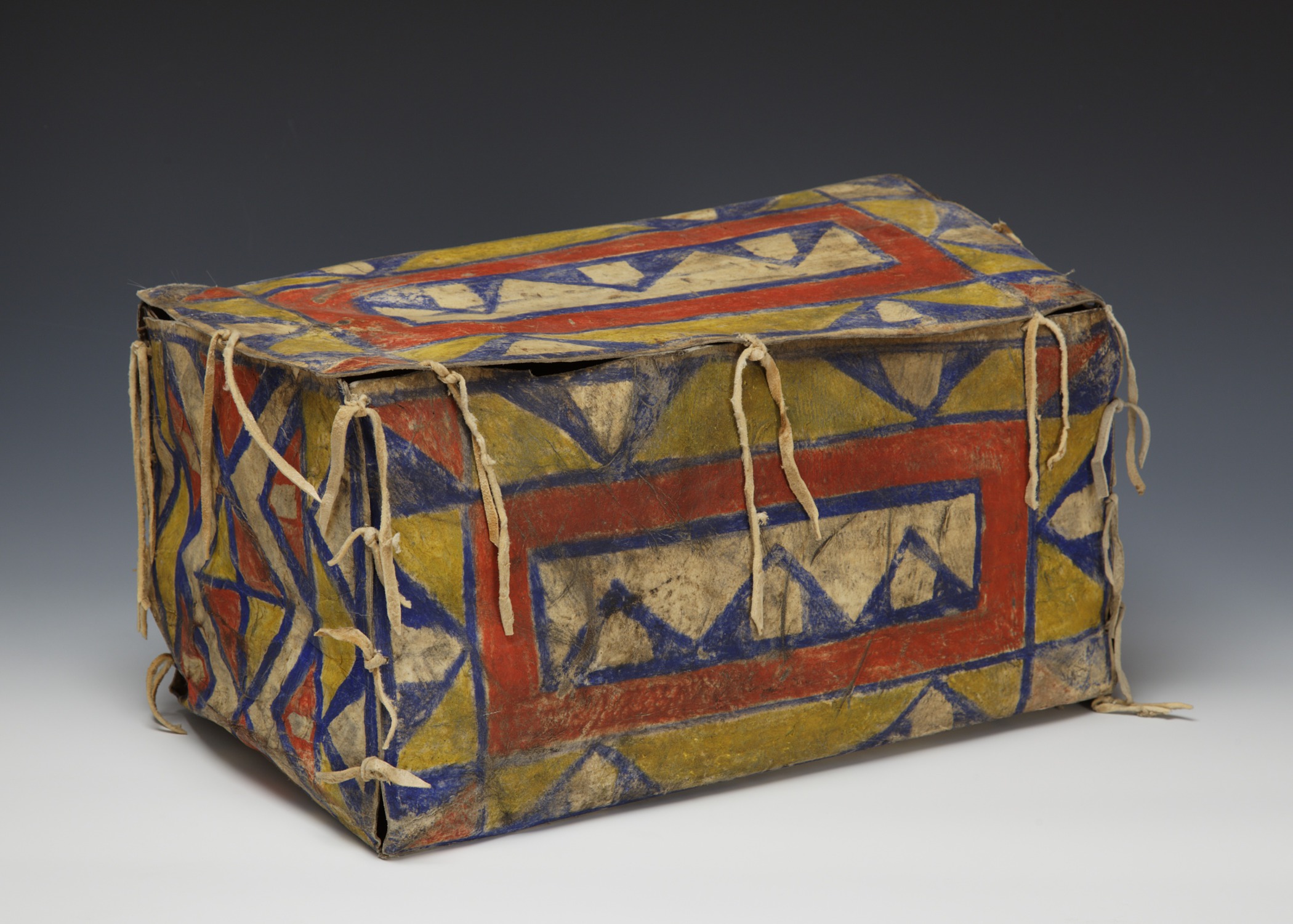Lakota (Teton Sioux)
Rawhide container (parfleche)
- About 1900
- Cow rawhide, native-tanned leather, and paint
- 8 1/4 × 8 1/4 × 16 5/16 in.
Hood Museum of Art, Dartmouth College: Gift of Guido R. Rahr, Sr., Class of 1951P; 985.47.26523
visibilityLook & DiscussPlains cultures had an abundant source of buffalo hides and used them, rather than pottery or basketry, to construct containers. Rawhide was prepared by scraping and cleaning the fur from the skin, stretching it, and allowing it to dry in the sun. This process created a stiff but durable leather that was used for many items, including bags, thongs, and war shields.
explore the object
Rawhide, which was also used for moccasin soles and war shields, was once called parfleche. “Parfleche” comes from the French words for “ward off” and “arrow.” Women made rawhide containers, first cutting out a "T" shaped piece of hide. The rawhide was laid flat, designed and painted with geometric, abstract designs, then folded into a type of hardened envelope. Sometimes they used sharpened buffalo bones to incise, or cut into, the rawhide to highlight a design. They tied the sides together with rawhide thongs.
Usually made in pairs, these containers could be used to store anything. Smaller versions were strapped to each side of a horse. The type of box or trunk seen here was unsuitable for transporting objects on horseback. Made by groups who had settled on reservations and transported items by wagon, it most likely imitated commercial European-American containers.
The sides of this parfleche box feature typical Lakota motifs with bold outlined elements.
learn more
In this video, Dartmouth Professor of History and Native American Studies Colin Calloway discusses this rawhide container.





